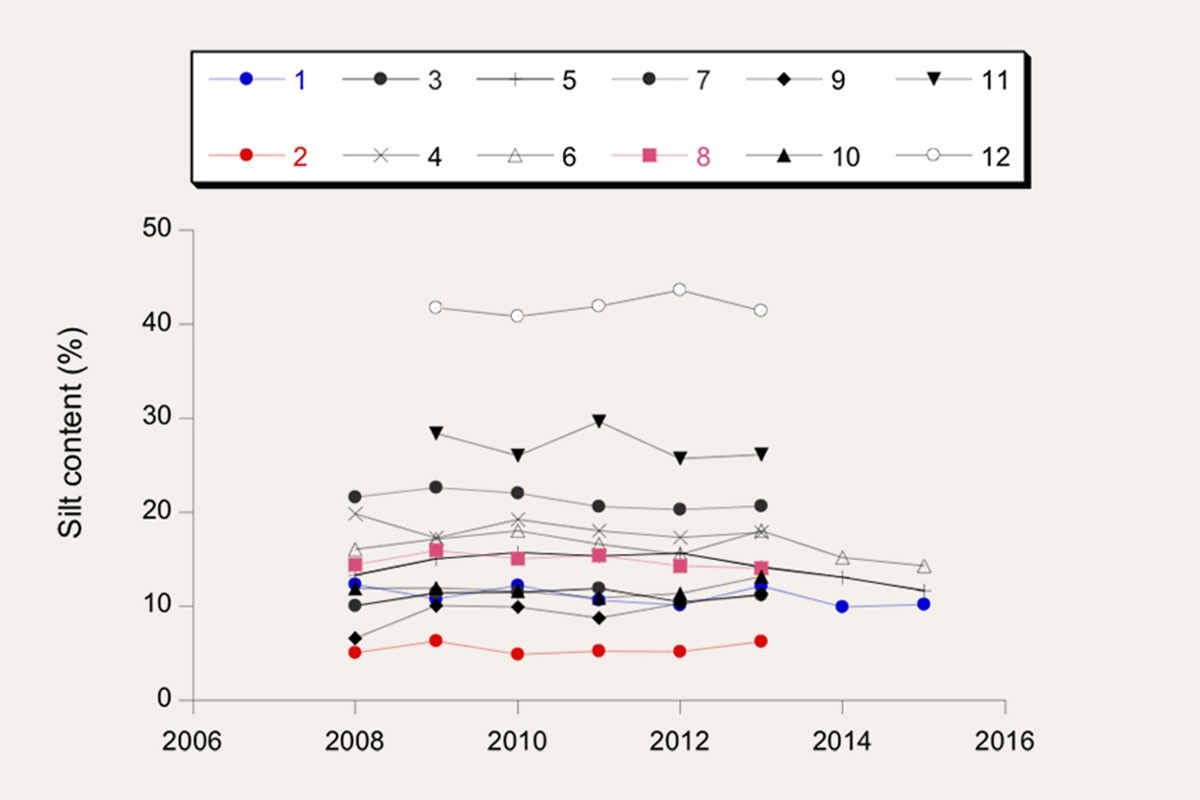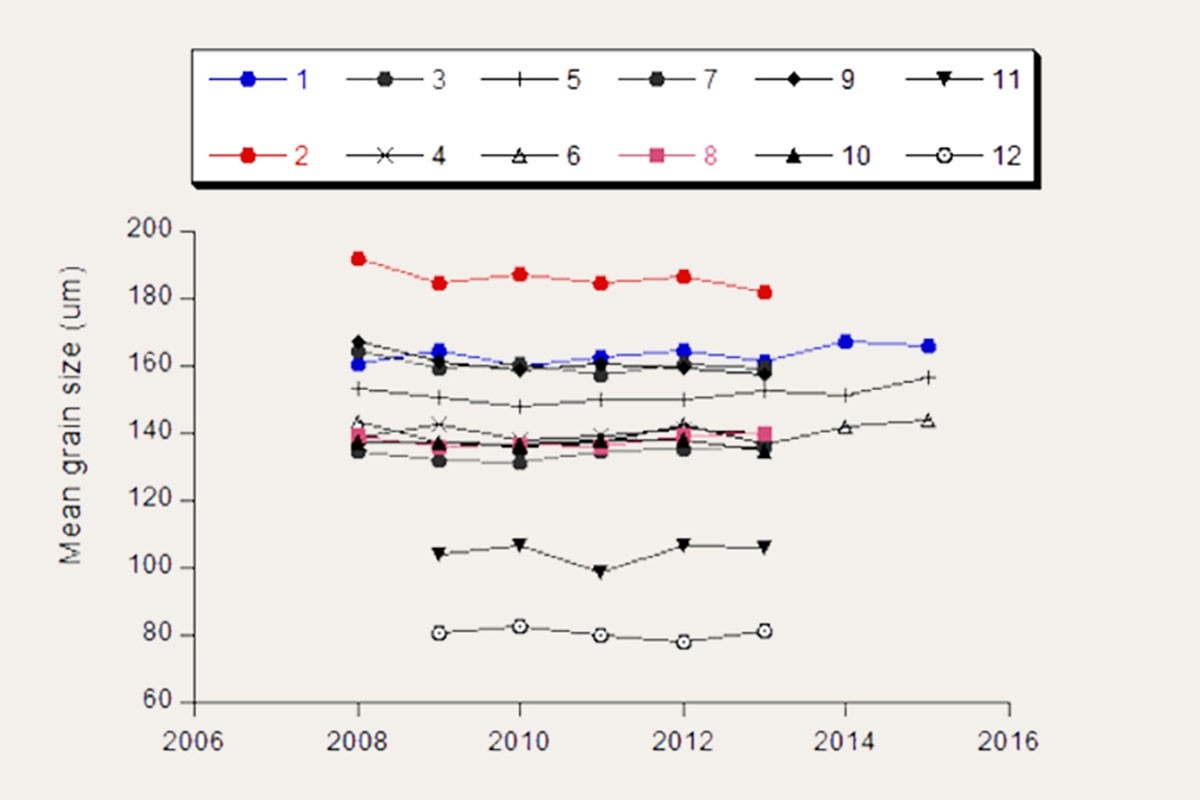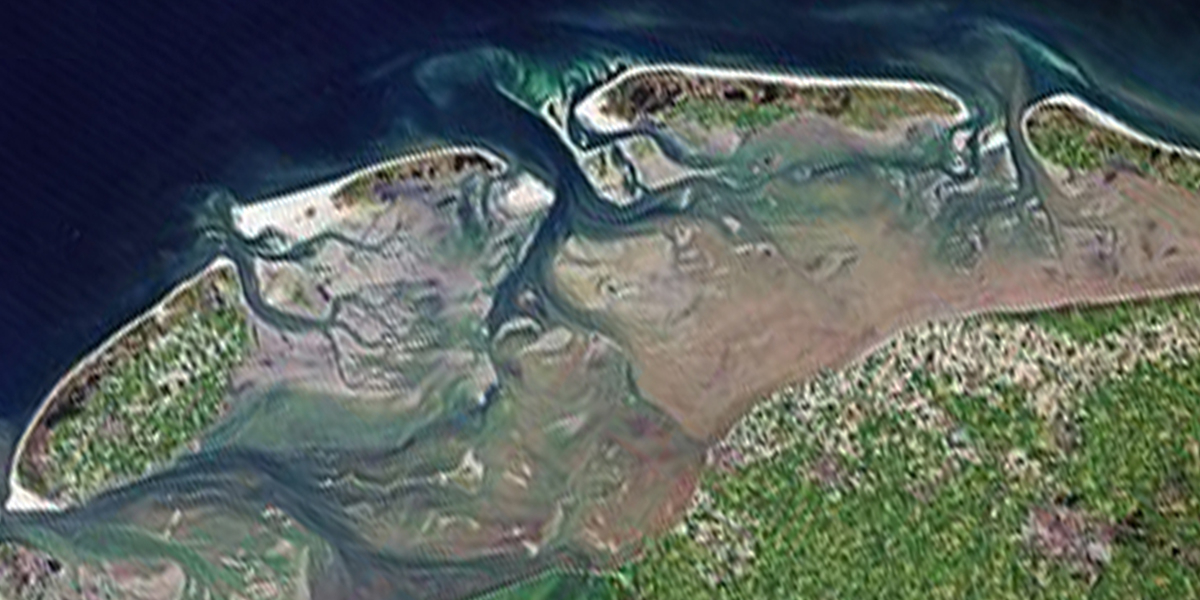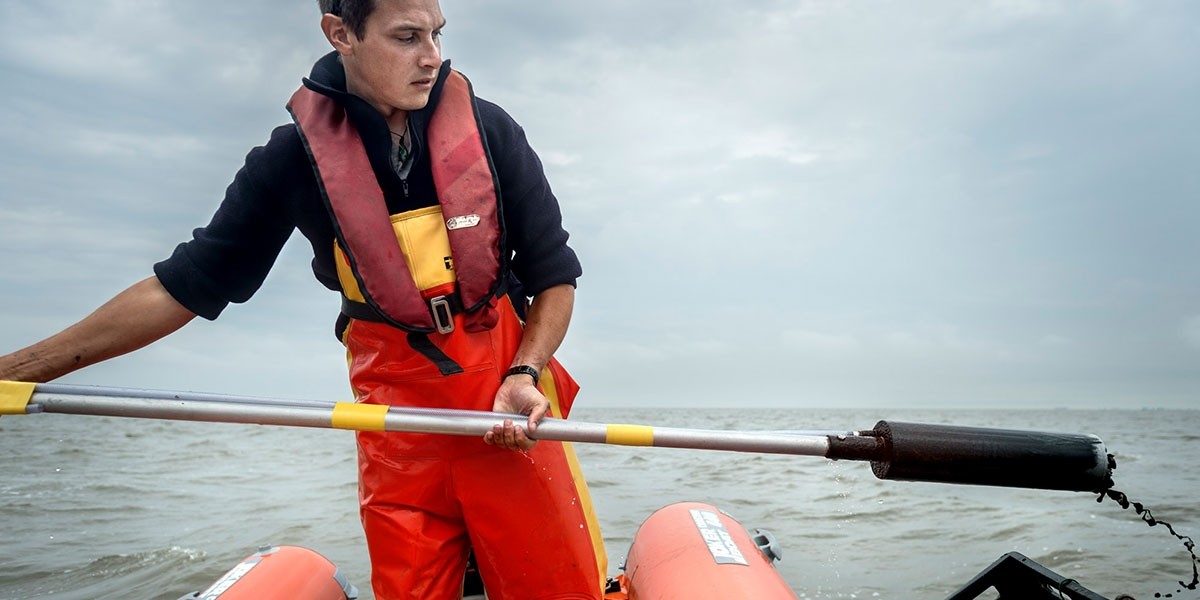Sediment composition

Mean silt content (%) of the sediment in the intertidal in the various tidal basins
1:Marsdiep; 2:Eierlandse Gat; 3:Vlie; 4:Borndiep; 5:Pinkegat; 6:Zoutkamperlaag; 7:Eilanderbalg; 8:Lauwers; 9:Schild; 10:Lower Ems; 11:Upper Ems; 12:Dollard.
SIBES Framework
Since 2008, the intertidal macrozoobenthos and sediment of the Dutch Wadden Sea has been sampled in late summer on a 500 * 500 m grid, within the framework of the Synoptic Intertidal Benthic Survey (SIBES) project. In total about 4500 benthos and sediment samples have been collected annually.
Over the years, clear differences between tidal basins are present. The coarsest sediment can be found in the Eierlandse Gat. The sediment type in all other tidal basins is within a range of 130 – 170 um, whereby there a slight tendency is that sediment composition becomes less coarse from the western to the eastern Wadden Sea. The Ems-Dollard estuary has the smallest grain sizes.
A similar pattern is reflected in the silt content of the sediment, with highest values in the Ems and Dollard and lowest ones in the Eierlandse Gat. Over the years, variability within tidal basins was found, however overall trends between basins remained present and the same. It might be that the time series is still too short to indicate trends over time. Also, seasonal variability will be substantial and this is not captured by the SIBES sampling.

Mean grain size (um) of the sediment in the intertidal in the various tidal basins
1:Marsdiep; 2:Eierlandse Gat; 3:Vlie; 4:Borndiep; 5:Pinkegat; 6:Zoutkamperlaag; 7:Eilanderbalg; 8:Lauwers; 9:Schild; 10:Lower Ems; 11:Upper Ems; 12:Dollard.
During the first 5 years SIBES was funded by the national Ocean and Coastal Research programme (NWO-ZKO), together with the gas exploration and production company, NAM and NIOZ. From 2013 onwards, sampling has been partly funded by NAM for the ecological monitoring of the gas drilling areas in the eastern Wadden Sea, and by the company Arenicola for the ecological monitoring of lugworm digging in the Eierlandse Gat. Since 2014, sample processing and data analysis has been restricted to a few areas in the Wadden Sea, financed by NIOZ (Balgzand area; blue), Arenicola (Eierlandse Gat; red) and NAM (Zoutkamperlaag, Pinkegat; yellow) respectively. Remaining samples of the other areas have been stored at NIOZ. SIBES sampling was continued in 2016 by NIOZ with the financial support of NAM and Arenicola for 1 year.
Time series

Long-term ecological time series Wadden Sea
